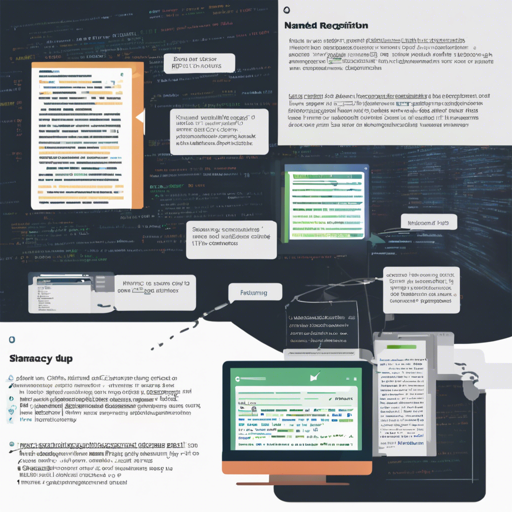Named Entity Recognition (NER) is a cornerstone of natural language processing that identifies and categorizes key information within text. With the help of spaCy-Lookup, using dictionary-based matching, you can leverage the power of NER in your applications effortlessly. This guide will walk you through the installation, usage, and best practices to implement named entity recognition in a user-friendly manner.
Installation
To get started, you need to ensure that you have spaCy 2.0.16 or higher installed. Follow these quick steps:
- Open your command line interface.
- Run the following command to install spaCy-Lookup:
pip install spacy-lookupGetting Started with spaCy-Lookup
Once installed, you need to download a language model to work with. For English, execute the following command:
python -m spacy download enImplementing the Entity Recognition Component
Now it’s time to implement the Entity Recognition component. The following code snippet illustrates how to set it up:
import spacy
from spacy_lookup import Entity
# Load the English model
nlp = spacy.load("en")
# Create an entity using a list of keywords
entity = Entity(keywords_list=["python", "product manager", "java platform"])
# Add the component to the pipeline
nlp.add_pipe(entity, last=True)
# Process an example text
doc = nlp(u"I am a product manager for a java and python.")
# Validate entity recognition
assert doc._.has_entities == True
assert doc[0]._.is_entity == False
assert doc[3]._.entity_desc == "product manager"
assert doc[3]._.is_entity == True
# Print recognized entities
print([(token.text, token._.canonical) for token in doc if token._.is_entity])Understanding the Code with an Analogy
Imagine that you are a librarian in a huge library filled with various genres of books. Your job is to categorize the books based on specific genres like “Science Fiction,” “Biography,” or “Technology.” Here is how the code relates to this analogy:
- Libraries and Models: In our analogy, the library is akin to the language model you load with spaCy.
- Cataloging Books: The entity recognition component is like a cataloging system that matches certain keywords (titles) from the books (text) to predefined genres (entities).
- Recognizing Titles: The tokens analyzed in the text are comparable to individual books. Depending on whether they belong to a specific genre or not, they are labeled correctly.
Troubleshooting Tips
If you encounter any issues while setting up or using spaCy-Lookup, consider the following:
- Ensure that the version of spaCy being used is compatible (v2.0.16 or higher).
- Check if the language model has been correctly downloaded and loaded.
- Verify that the keywords you are using are accurately listed and formatted.
- If you notice that entities are not being recognized, make sure you’ve added the entity component at the end of your pipeline with
last=True.
For more insights, updates, or to collaborate on AI development projects, stay connected with fxis.ai.
Available Attributes
The spaCy-Lookup extension enriches the Doc, Span, and Token objects with various attributes:
- Token._.is_entity: Indicates if a token is recognized as an entity.
- Token._.entity_type: A human-readable description of the entity.
- Doc._.has_entities: Indicates if the document contains any entities.
- Doc._.entities: A list of tuples containing the entities found in the document.
Conclusion
Implementing Named Entity Recognition using spaCy-Lookup offers a straightforward way to extract important information from your text. By following this guide, you can elevate the NLP capabilities of your applications efficiently.
At fxis.ai, we believe that such advancements are crucial for the future of AI, as they enable more comprehensive and effective solutions. Our team is continually exploring new methodologies to push the envelope in artificial intelligence, ensuring that our clients benefit from the latest technological innovations.

